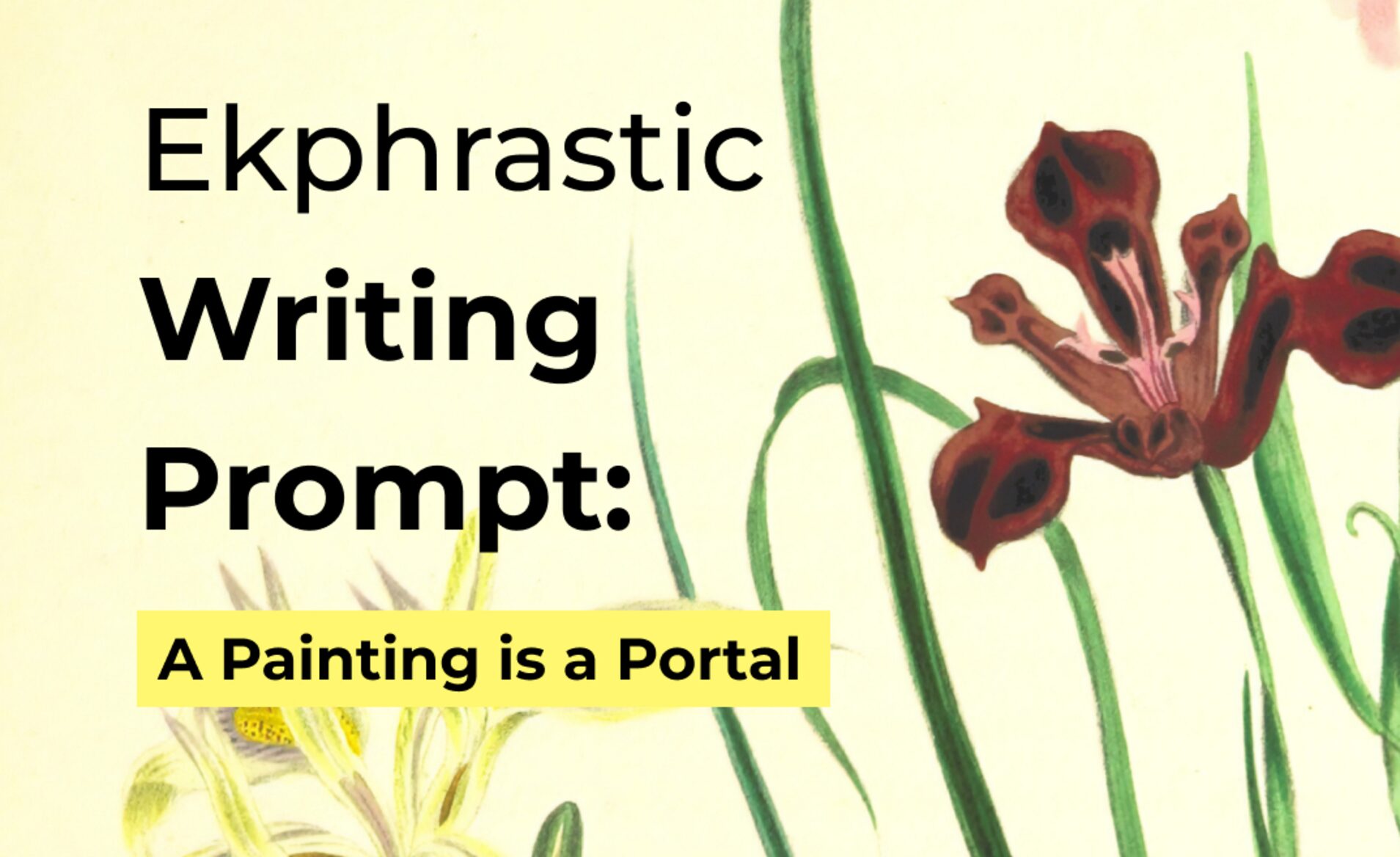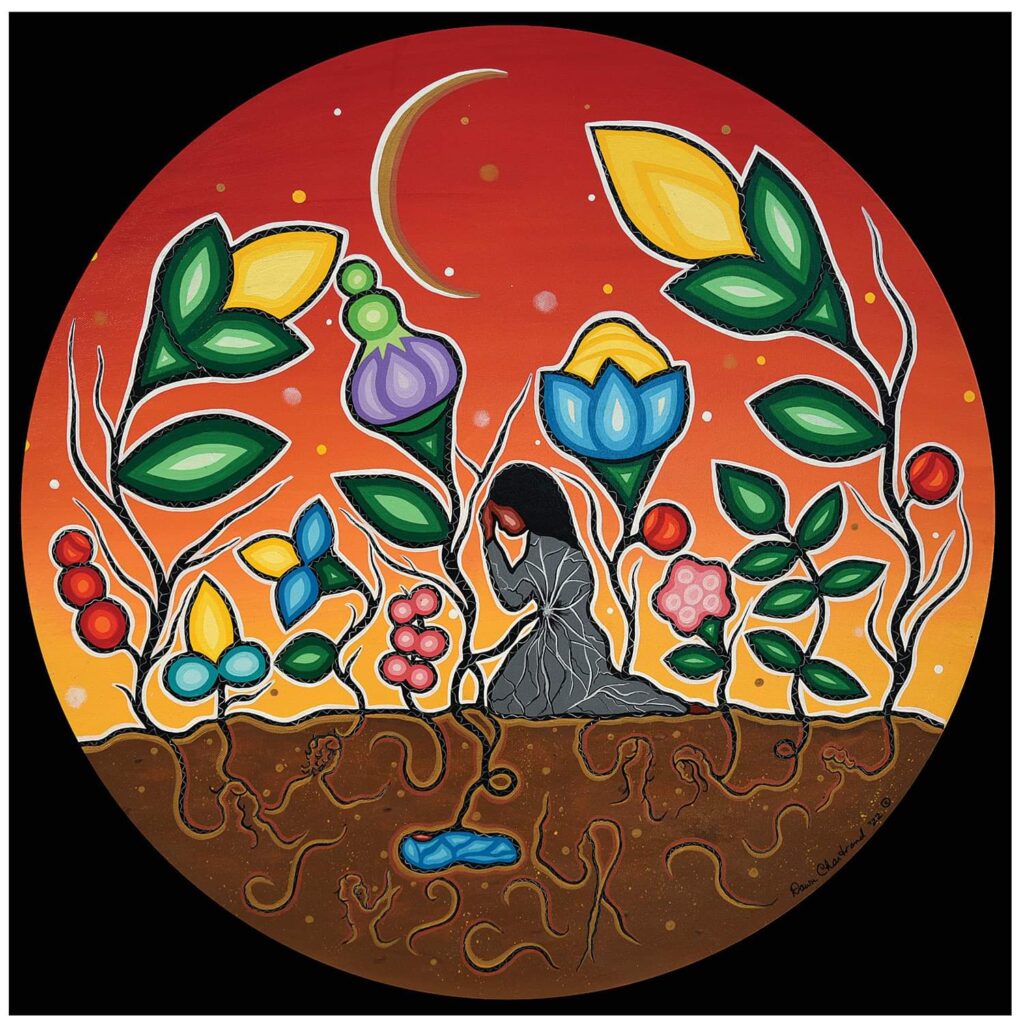
PRISM Prompts is a treasure chest full of muses, wonderings, and inspiration for both seasoned writers who are itching for a new approach to their craft and new writers who are looking for a place to get started, somewhere outside of the blank page. Turn the key, lift the lid, and look inside. Take whatever shines the brightest or the strangest, bring it home with you, and write.
When you look at this painting, what do you see?

Artwork by: Dawn Marie Chartrand
Last week, I participated in a teaching workshop at the UBC Centre for Teaching, Learning and Technology. During my lecture, I put this painting up on the projector, and I asked my fellow grad students the same question. What do you see? Better yet, what do you observe?
Here’s a snippet from our list:
– A woman and a child
– Connected to nature
– Root structure inside the woman
– She’s exhausted, her nutrients are being drained out of her
– Contrast between bright colours and dark themes
– Grief
This is the beginning of a process called ekphrasis. Ekphrasis is a Greek term that means description. In the literary world, it’s a term that refers to a description of visual art in a piece of writing. A famous example is the poem, “Ode on a Grecian Urn” by John Keats. A more contemporary one is “When I Was in Las Vegas and Saw a Warhol Painting of Geronimo” by William Bearhart. These poems are great examples of how creating in response to a work of art can look many different ways. It can be a love letter to what you see, a decolonization practice, or something else entirely.
I like to think of a work of art as a portal. Look into it and take in the details of another world. Then, write about the place you’ve discovered.
Prompt: Take yourself on a writing field trip!
1. Go to an art gallery or a museum, find a painting, a sculpture, or an installation that speaks to you, then sit down somewhere nearby and set a timer for ten minutes. Just observe the art without writing anything down.
2. Then, take out your journal and jot down what you see. Respond to the work of art in front of you. Create in response to someone else’s creation. Look into it and take in the details of another world.
3. Take what you’ve written home with you and stitch it into a new shape, into the shape of your own story. Circle and underline parts that speak to you and use them as a jumping-off point for a piece of prose or poetry.
Victoria McIntyre is a writer currently working on the unceded lands of the xʷməθkʷəy̓əm (Musqueam), Sḵwx̱wú7mesh (Squamish), and səl̓ilw̓əta (Tsleil-Waututh) Nations. She is the Reviews Editor at PRISM international. She is also an MFA candidate in Creative Writing at the University of British Columbia. Her work has been published by The Scholastic Art & Writing Awards, The Goose, The Hart House Review, and others.